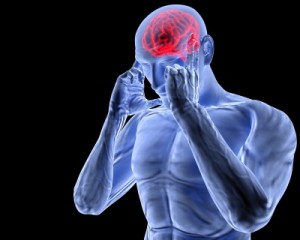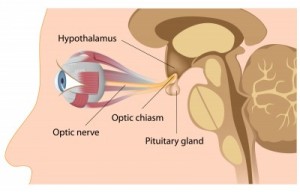The Migraine Hypotension Connection

Migraines and Cluster Headaches are the same. They occur when brain blood flow is disrupted from a stress trigger.
Migraine-like symptoms frequently always present with reduced systolic blood pressure (below 105), or with a sudden relative drop in blood pressure prior to the migraine onset. Although this connection is weakly documented in medical literature, it is easily verified.
This model for migraine has the same cause as hypotension. Individuals with migraines often have a history of hypotension — that disappears as as arteries harden. See arterioclerosis.
Several theories describe migraine cause, Depolarization, Vascular, Neural and Unifying. Curiously, none of these theories suggests that tissue oxygen deprivation as a trigger or cause for migraine.
Hypoxia conditions, relating to capillary performance, and functional oxygen delivery, are fully hidden in medical evaluation methods, except in advanced cases where the arteries are sufficiently degenerate and show occlusion or aneurysm.
A French study in 2007, using the Positron Emission Tomography (PET) technique identified the hypothalamus as being critically involved in the early migraine stages.

The hypothalamus is a control gland that controls blood pressure. It cannot work well when it’s blood supply is compromised.
A disabled hypothalamus, controls blood flow, both victim and cause of poor oxygen during a migraine.
The victim/cause pattern makes complicates recovery and explains why migraines tend to last a long time 4–72 hours.The depression wave model results from the spreading hypoxic distress of brain tissue.
We assert that the hypoxic (stress) triggers a portion of the brain to enter anaerobic glycolysis which causes local acidosis, which further inhibits the aerobic metabolism of nearby brain area, causing expansion of the distressed region.
In simple terms, a migraine is a brown-out that affects part of the brain — that grows.
As the “wave effect” expands, more brain tissue enters distress. This model describes migraine onset as triggered by a blood-plasma desaturation event, from a toxin or other stress.
This failure causes a drop in usable oxygen delivery to brain, directly or by triggering capillary swelling in the brain, when capillaries bloat and narrow due to cellular sodium accumulation.
The drop below the migraine-trigger-threshhold causes a cascade effect of distress processes including potentially neurotransmitters, hormones, inflammation and so on, involving the hypothalamus gland, which in turn controls blood pressure.
This network of factors reinforces the distress pattern, which enables migraines to persist for days.
Both Manfred von Ardenne and Dr. Emanuel Revici developed methods that reduce the severity and incidence of migraines, though different, but complementary mechanisms:
- Manfred von Ardenne documented Oxygen Multistep Therapy, p- 251, 259, 282, which reduced migraine incidence and severity by restoring capillary blood flow;
- Dr. Revici and associates found that n‑Butyl alcohol was sufficient to control migraines a strong majority of cases. The author asserts that this effect resulted from an unknown role as a Vasoregulator which aids restoration of normal blood flow to the brain after a migraine trigger.
These solutions restore oxygen transport process usually by restoring vascular tone. See hypotension protocol.
